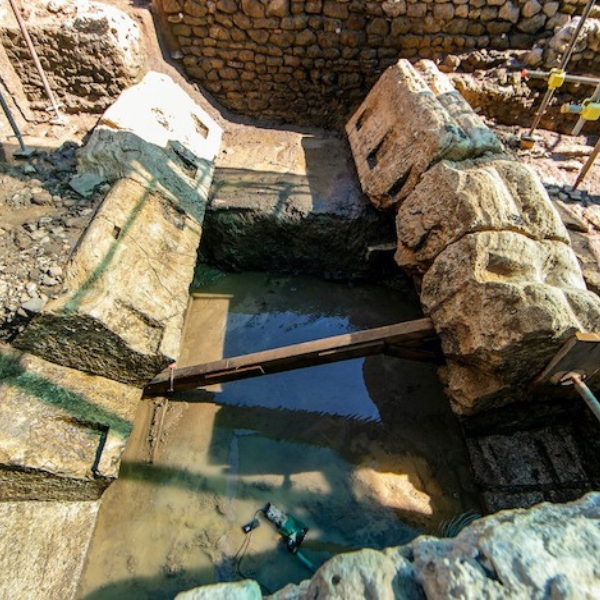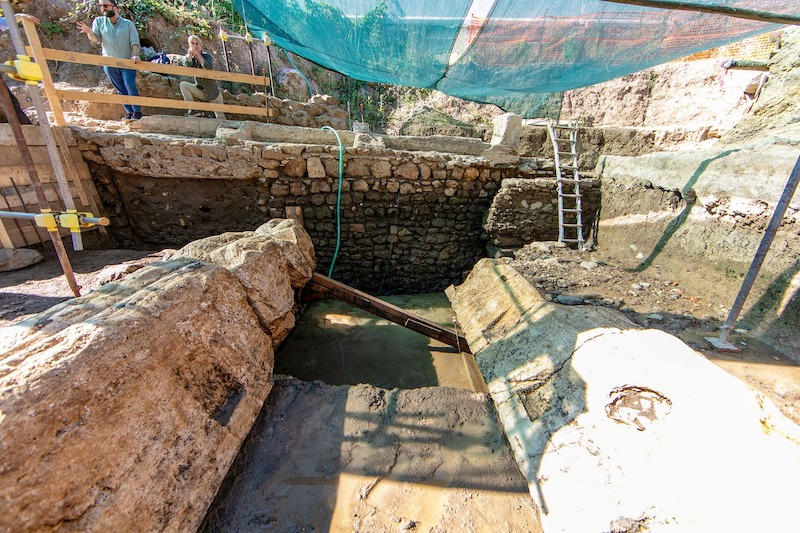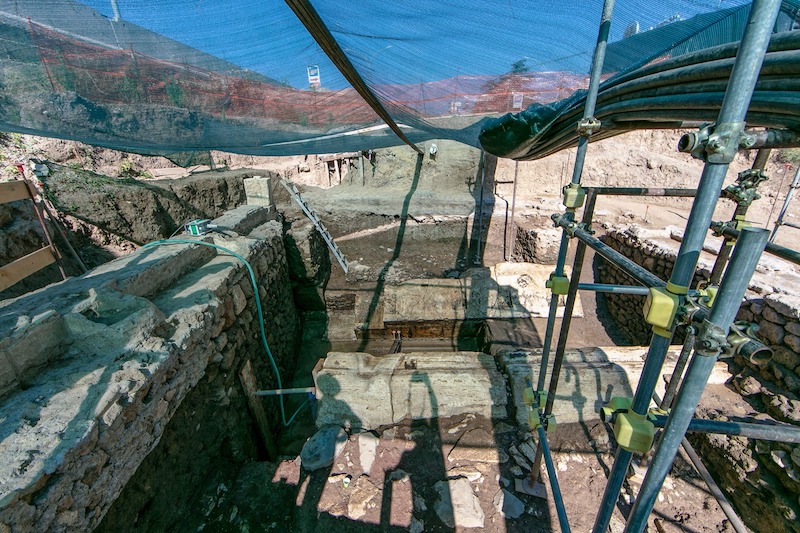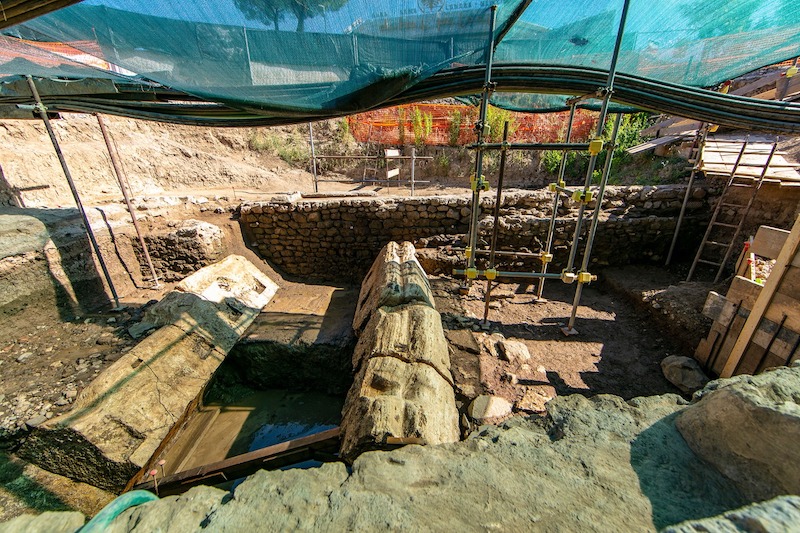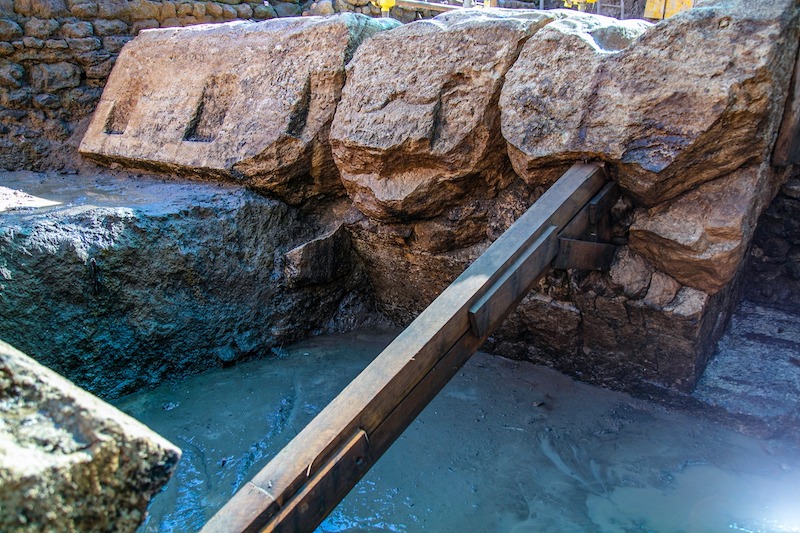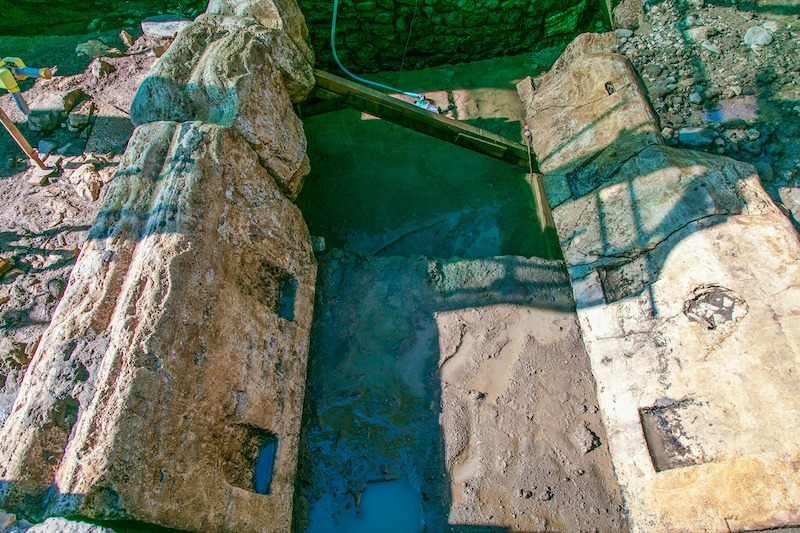During works to widen Via Tiburtina, a few hundred metres from UniCamillus premises, the remains of an ancient Roman bridge from the Imperial age were unearthed. This bridge’s aim was to allow the original Via Tiburtina to cross over Pratolungo Trench just before its confluence with the river Aniene, making this area prone to frequent flooding and swamping.
Excavations are led by the scientific direction of Fabrizio Santi – an archaeologist from Rome Special Superintendence – and by archaeologists Stefania Bavastro and Mara Carcieri from Land Srl.
Digs revealed the central section of the bridge’s round arch. It is composed of huge dry stone travertine blocks, linked through rectangular recesses connected to protrusions with the same features and sizes. The travertine blocks are also strengthened by a thick cement layer.
Archaeologists found the arch without its keystone. The reason behind it may be renovations dating back to the medieval age or the Renaissance one. In these two periods, the bridge was partially demolished and enclosed by two walls over 3-metres-high. The latter – covered in plaster only on their external side – seem to have been a support for a ramp with the aim of crossing the trench.

